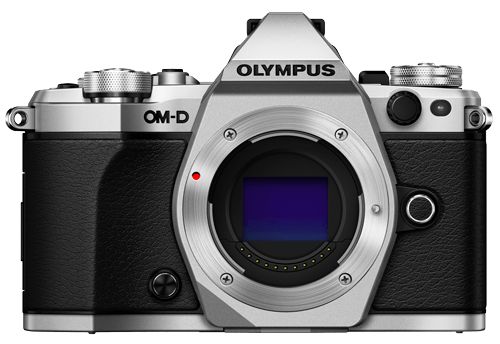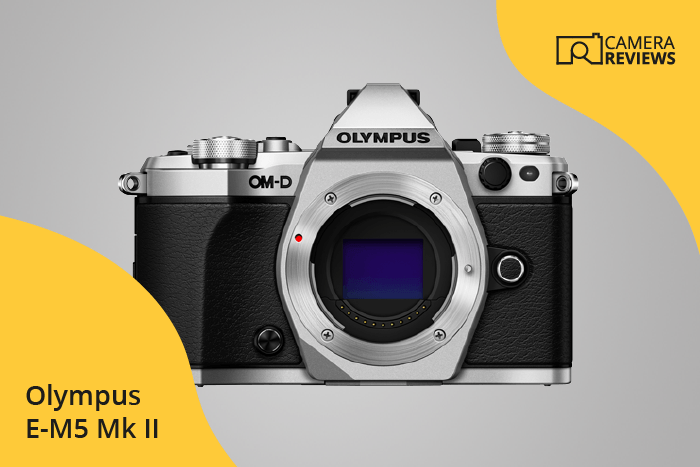Olympus OM-D E-M5 Mark II Specs and Scores

The Olympus OM-D E-M5 Mark II receives a score of 59/100, with its general specifications revealing it as a fairly competitive camera in today’s market. Announced on 02/05/2015 and released in the same year, this mirrorless camera initially retailed for $1100. Its dimensions measure 124 x 85 x 45mm, and it weighs 469g (1.03lbs). These specifications show that the E-M5 Mark II is a compact and lightweight option for photographers seeking a reliable and portable camera.
Olympus OM-D E-M5 Mark II Overview and Optics
The Olympus OM-D E-M5 Mark II receives a score of 58/100 for its optics. This camera features a 16.1-megapixel CMOS sensor and a TruePic VII processor, which contribute to its DXOMARK score of 73. The camera’s shooting speed is 10 frames per second, while its sensor size is Micro Four Thirds. Additionally, it has a Micro 4/3 lens mount and offers image stabilization.
In the current market, the 16.1-megapixel sensor and 10 fps shooting speed are considered modest, as higher-end cameras now offer more megapixels and faster shooting speeds. However, the image stabilization and Micro 4/3 lens mount are desirable features that enhance the camera’s usability and compatibility with various lenses.
The Olympus OM-D E-M5 Mark II’s optics may not be the most advanced, but its combination of features still makes it a reliable choice for photographers seeking a versatile camera with a compact design.
Olympus OM-D E-M5 Mark II Video Performance
The Olympus OM-D E-M5 Mark II receives a video score of 70 out of 100. This camera offers Full HD video resolution, with maximum dimensions of 1920 x 1080 pixels. It also supports a maximum video frame rate of 60fps, ensuring smooth video playback. Additionally, the camera features built-in time-lapse functionality, providing creative options for capturing events over time.
In today’s market, Full HD resolution is considered standard, but not exceptional, as 4K resolution becomes increasingly popular. The 60fps frame rate, however, remains competitive for capturing fast-moving subjects and producing high-quality slow-motion footage. While the Olympus OM-D E-M5 Mark II may not boast the highest video resolution, its other video capabilities still hold relevance and appeal for various users, making it a solid choice for those seeking a dependable camera with time-lapse functionality.
Olympus OM-D E-M5 Mark II Features and Benefits
The Olympus OM-D E-M5 Mark II receives a feature score of 70/100. With a 3-inch touchscreen and a screen resolution of 1,037,000 dots, this camera offers clear and precise image previews. The flip screen further enhances the user experience, making it convenient for capturing images from various angles.
Despite lacking GPS and Bluetooth capabilities, the OM-D E-M5 Mark II compensates with its built-in Wi-Fi feature, allowing users to easily transfer images and control the camera remotely. In today’s market, these features make the camera competitive and suitable for various photography styles.
The Olympus OM-D E-M5 Mark II is a solid choice for photographers seeking a versatile camera with a balance of essential features and user-friendly functions.
Olympus OM-D E-M5 Mark II Storage and Battery
The Olympus OM-D E-M5 Mark II receives a storage and battery score of 21/100. This camera offers a single memory card slot that accepts SD, SDHC, and SDXC cards, providing users with a range of storage options. However, the battery life is limited to 310 shots per charge, which may not be sufficient for extended shooting sessions. The battery used is a BLN-1 type, and the camera does not support USB charging.
Comparing these specifications to other cameras on the market, the OM-D E-M5 Mark II falls short in terms of battery life and storage capabilities. Offering only one memory card slot and lacking USB charging functionality are notable drawbacks for photographers who need longer shooting times and convenient charging options. Despite its strong performance in other areas, the OM-D E-M5 Mark II’s storage and battery features could be improved to better meet the demands of today’s photographers.
Olympus OM-D E-M5 Mark II Alternatives
Do you want to know how the Olympus OM-D E-M5 Mark II compares to its competitors? Have a look at the most popular comparisons for this camera below:
- Olympus OM-D E-M10 Mark II vs OM-D E-M5 Mark II
- Olympus OM-D E-M5 Mark II vs OM-D E-M5 Mark III
- Olympus OM-D E-M10 Mark IV vs OM-D E-M5 Mark II
- Olympus OM-D E-M1 Mark II vs OM-D E-M5 Mark II
- Olympus OM-D E-M5 Mark II vs PEN-F
- Fujifilm X-T4 vs Olympus OM-D E-M5 Mark II
Olympus OM-D E-M5 Mark II FAQ
Does the Olympus OM-D E-M5 Mark II Have Built-in Image Stabilization?
Yes, the Olympus OM-D E-M5 Mark II features a 5-axis in-body image stabilization system, which helps to reduce camera shake and produce sharper images.
Does the Olympus OM-D E-M5 Mark II Support 4K Video Recording?
No, the Olympus OM-D E-M5 Mark II does not support 4K video recording. Its maximum video resolution is Full HD 1080p at 60fps.
What Size Sensor Does The Olympus OM-D E-M5 Mark II Have?
The Olympus OM-D E-M5 Mark II has a Micro Four Thirds sensor, which is smaller than APS-C but larger than 1-inch sensors, offering a good balance between image quality and portability.
Does the Olympus OM-D E-M5 Mark II Have a Dual Memory Card Slot?
No, the Olympus OM-D E-M5 Mark II has a single SD memory card slot, which supports SD, SDHC, and SDXC cards.
Does the Olympus OM-D E-M5 Mark II Have a Touch Screen?
Yes, the Olympus OM-D E-M5 Mark II features a 3-inch fully articulating touch screen, allowing for easy navigation and control of camera settings.
Does the Olympus OM-D E-M5 Mark II Have Wi-Fi and Bluetooth?
The Olympus OM-D E-M5 Mark II has built-in Wi-Fi for wireless image transfer and remote control, but it does not have Bluetooth connectivity.
Does the Olympus OM-D E-M5 Mark II Have GPS?
No, the Olympus OM-D E-M5 Mark II does not have built-in GPS, but location information can be added to images using a compatible smartphone and the Olympus Image Share app.
Is the Olympus OM-D E-M5 Mark II Weather Sealed?
Yes, the Olympus OM-D E-M5 Mark II is weather sealed, featuring dust, splash, and freeze-proof construction, making it suitable for use in various conditions.
Does the Olympus OM-D E-M5 Mark II Have a Built-in Flash?
No, the Olympus OM-D E-M5 Mark II does not have a built-in flash, but it comes with an external flash unit (FL-LM3) that can be attached to the camera’s hot shoe.

